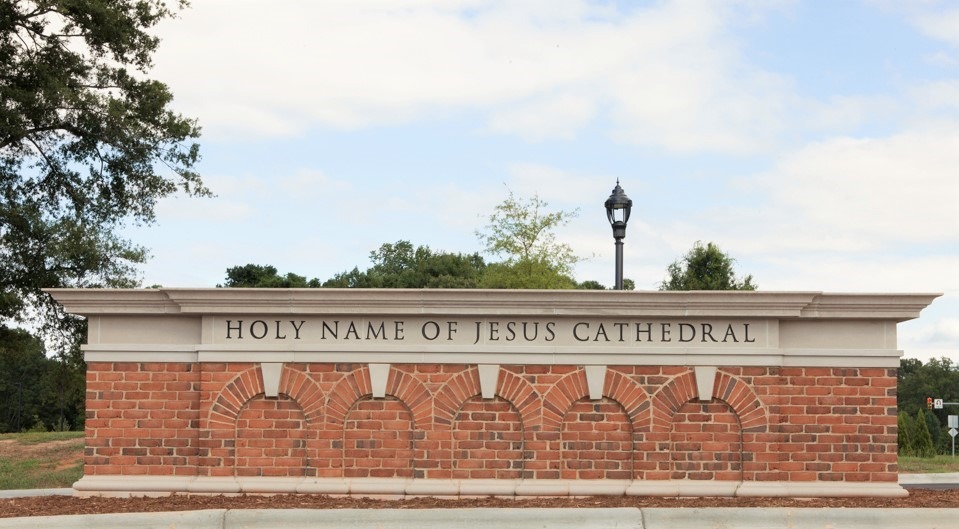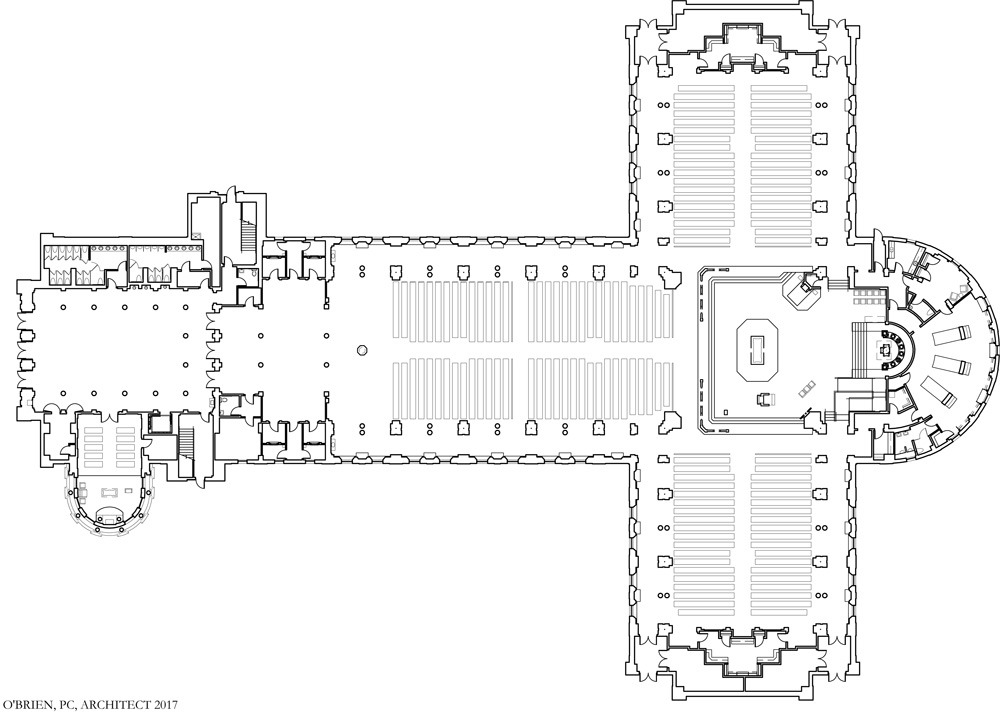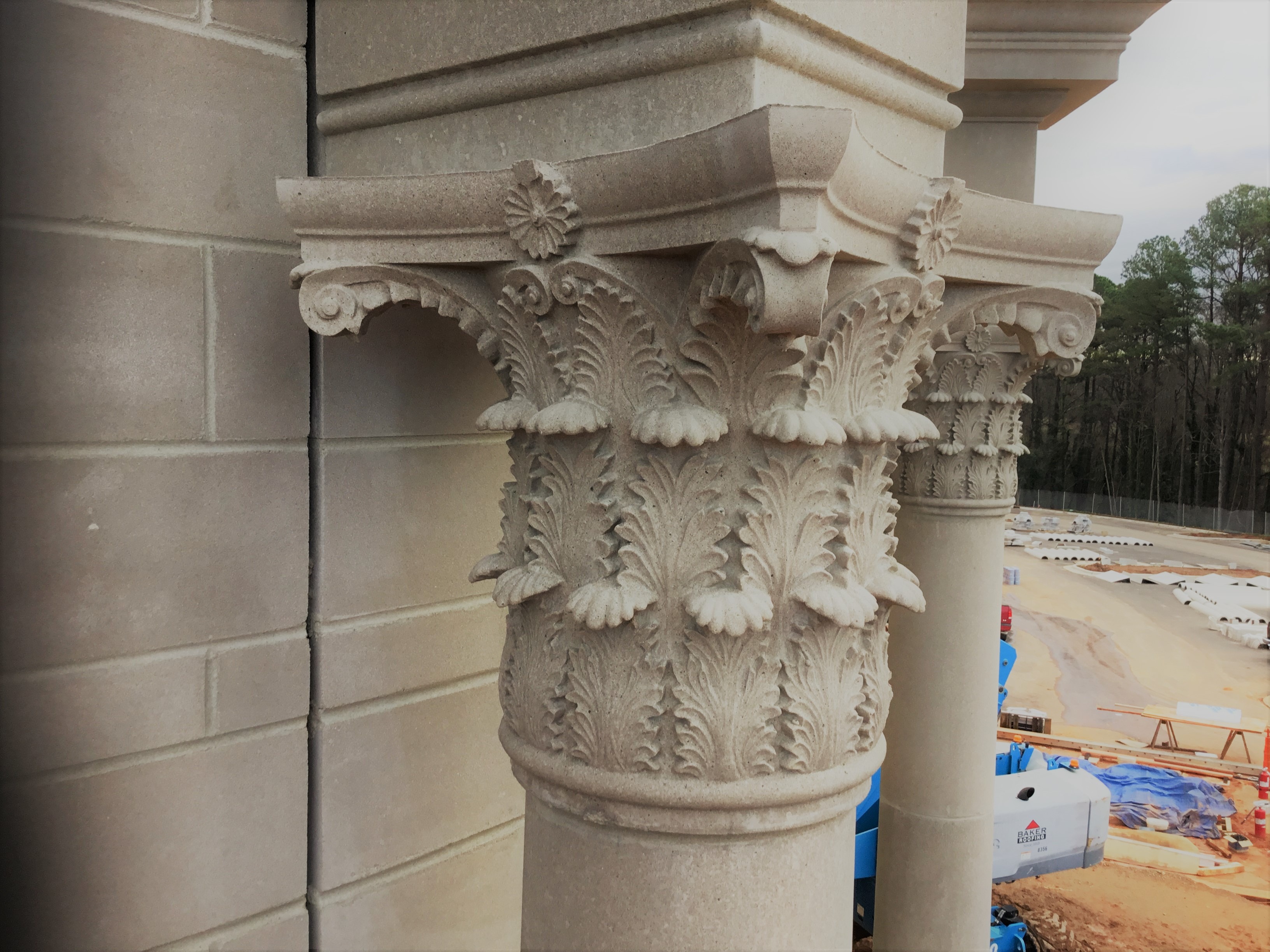Often times when a building outgrows its original use and its purpose can no longer be fulfilled, preservationists and historians will devote their time to finding a way to make it last. Maybe the project calls for a restoration, renovation, or rehab. Some may call for an addition. In the case of satisfying the needs of the Diocese of Raleigh, the people of Sacred Heart Cathedral yearned for a much larger, and much newer place of worship.
However, making the decision to leave Sacred Heart Cathedral for a more accessible and suitable parish did not go without controversy. The historic church was built in 1924, and some members of the congregation refused to leave, for this building meant more than an architectural relic to them. The new location was proposed to be outside of town, which meant more travel for parishioners.
The Catholic Church had already owned the proposed site of the new cathedral for over a century, begging for it to be made use of. The first native North Carolinian to be ordained priest, Reverend Thomas F. Price, established an orphanage on the land in the late 1890’s after acquiring hundreds of acres west of Raleigh. Later, some of the land was used for Cardinal Gibbons High School and the diocese offices.
The Diocese of Raleigh has indeed grown rapidly as mentioned previously, now serving 8 Deaneries and 96 parishes in 52 counties… a total of over 217,000 Catholics. The population growth and need for larger space was not only identifiable in the Catholic religion. Back in the 1950’s following the establishment of the Research Triangle Park, one of the most high-tech research and development parks in the United States, numerous jobs arose in science and technology. By the early 21stcentury, Raleigh quickly became one of the fastest growing communities in the country.
It was with obvious demand and a great amount of excitement that in 2011, Bishop Michael F. Burbridge announced the construction of a new cathedral to replace the existing Sacred Heart Cathedral in order to accommodate the growing number of people joining the congregation. James O’Brien of O’Brien & Keane was contracted to be the architect for the final design, with the intent of creating a sacred space that accurately represented the community devoted to faith, grace, charity, and missionary service that would be worshipping there.
Completed just recently in July of 2017 the new Cathedral, which was to be called Holy Name of Jesus Cathedral, underwent a near two-year construction process with a price tag of forty-six million dollars. With the assumption that it would be used for masses, major diocese liturgies, events, retreats, sacred music concerts, lecture series, and accommodate religious affairs for the North Carolina State campus, the design required an ample amount of seating.
The transepts and nave make up assembly space, which seat approximately 2000 guests. Even ample parking was considered in the design, providing 740 parking spaces, allowing for roughly 2.7 persons per assumed vehicle. With a gross floor area of 40,000 square feet, the crucifix shaped floor plan also consists of the sanctuary and tabernacle farthest from the main entry, as well as the exo narthex, narthex, confessionals and endo narthex, closest to farthest from the main entry, respectively.
Because the Cathedral was meant to provide a quiet space for reflection and adoration of the Blessed Sacrament, the architecture presents it as such. According to the O’Brien and Keane website project description, “the new Catholic church design includes a cruciform structure and a prominent dome, which visually connects the church with downtown Raleigh, and draws on the heritage of traditional Catholic church architecture. Our firm’s design also includes custom marble liturgical furnishings, rendered in Bianco Carrara and Giallo Siena, and crafted to express and reinforce the design themes and narrative.” Bianco Carrara and Giallo Siena are both natural stone marble slabs originating from Italy, with white- grey and yellow-beige color tones, respectively. Prized for their luster and beauty, these enhance the embellishment of the sanctuary, and begin to characterize the divinity of a religious space.
As often seen in large Cathedrals, there was an architectural desire to include fine detailing, which was accomplished through the building’s interior language. This type of work was originally done by hand in many churches, incorporating more character into the construction with well-executed craftsmanship. Fine details were also incorporated with the intention of displaying the extravagance of Christ. The ultra-designed masonry in the Holy Name of Jesus Cathedral marks minor projections in the brickwork called corbelling in order to present a relief in the wall versus a flatter surface.
This in turn creates an emphasized notion of depth and shadow to offer more appealing interior views. This articulation begins to break down large interior walls, via bays, while conveying the building’s structural strategy, via arched windows, on the exterior. The elements of work ethic, achievement, and craft were not lost in this new construction, as it is said that, “the voussoirs forming the arches are custom-made tapered shapes, in order to allow the joints to remain parallel, and to relieve the workmen of the laborious and dangerous task of saw-cutting brick on-site,” even complying with modern safety regulations.
Architect O’Brien reinforces a Corinthian Order to portray an elevated design, and its exterior is rendered completely in cast stone, to distinguish it from the rest of the building and to denote its importance, topped with a roof surfaces clad in copper. O’Brien commented that, “the design will be similar to other Cathedrals, in that we are building on a 2000-year heritage of sacred architecture. At the same time, the Cathedral is intended to be a reflection of the values of the faithful of North Carolina, and so it is bound to be unique in that way.” One of its greatest feats was the ribbed dome, its highest point reaching a total of 173 feet from the ground, inclusive of a large circular skylight that floods daylight into the sanctuary below. With an inner and outer shell creating an interstitial space for engineering systems, its interior and exterior architectural characteristics correspond via pilasters and ribs.
On the other side of the Cathedral is the bell tower, which reaches a height of 154 ft., just lower than the height of the dome. With a cross attachment on top, the tower also features decorative balustrade, rustication of the brickwork, quoins at the corners and Corinthian columns, arches, and moldings.
The design seems to reference classical Roman architecture- fitting for the new Roman Catholic Cathedral. Above the cast stone entry, a façade of wood-mold brick in punctuated by a circular window with a diameter of twelve feet, framed with more cast stone, which is again used in piers and an entablature that bound the composition of the scene. The transept ends replicate the visual entablature “wrapping” with cast stone as displayed in the entry façade, but leaves the field of brick to fall all the way down to where the building meets the ground. This difference in masonry materiality begins to denote a relationship between the opportunity for entry and the use of cast stone versus the use of brick. The transept exterior walls also feature a total of twenty-two bays with single arched windows at the ground level, centered in the pars of the clerestory of each bay.
Brodie Contractors was chosen to fulfill the need for the large amount of masonry work on this site, with a contract scope that was to include 400,00 custom made bricks, 15,000 pieces of architectural precast stone, 41,000 CMU foundations and shear walls, and 483 cubic yards of grout for the building exterior alone. At a $3.5-million-dollar contract value for what was proposed to be a 9-month project totaling at least 50,000 man hours, this construction feat and architectural masterpiece was considered a once in a lifetime project to Brodie Contractors.
To reflect the heritage and strong connection to the Cardinal Gibbons High School, which once sat on the site of the Cathedral, the masonry workers installed a time capsule filled with Gibbons memorabilia, behind the cornerstone made of red granite. It was previously blessed by Pope Francis in 2015 when the construction began, and is now located to the right of the large front door of the church. The commemorative cornerstone bears the first three letters in the Greek spelling of Jesus name, HIS, within a circle, and the Roman numerals for 2017, the year in which the construction of the Cathedral was completed.
Not many photos can be found that date prior to the installation of the cornerstone and dedication of the new Cathedral. A source from News Observer claims Monsignor David Brockman told a group of Catholics who got an early tour not take any pictures, “we want it to be a surprise,” he said. Understandably so, it only makes sense to surprise the locals with a grand feat such as the Holy Name of Jesus Cathedral, which took its place as one of the largest in the country, coming in fifth to those in San Francisco, Newark, New York, and Los Angeles.
Deep in the heart of the City of Oaks in Raleigh, North Carolina, now sits the Holy Name of Jesus Cathedral. Encircled by a growing commercial pocket, residential suburb, and hundreds of trees, it can be seen from nearly all of the surrounding areas from afar as its bell tower penetrates the sky, singing a fulfilling, harmonious melody.




